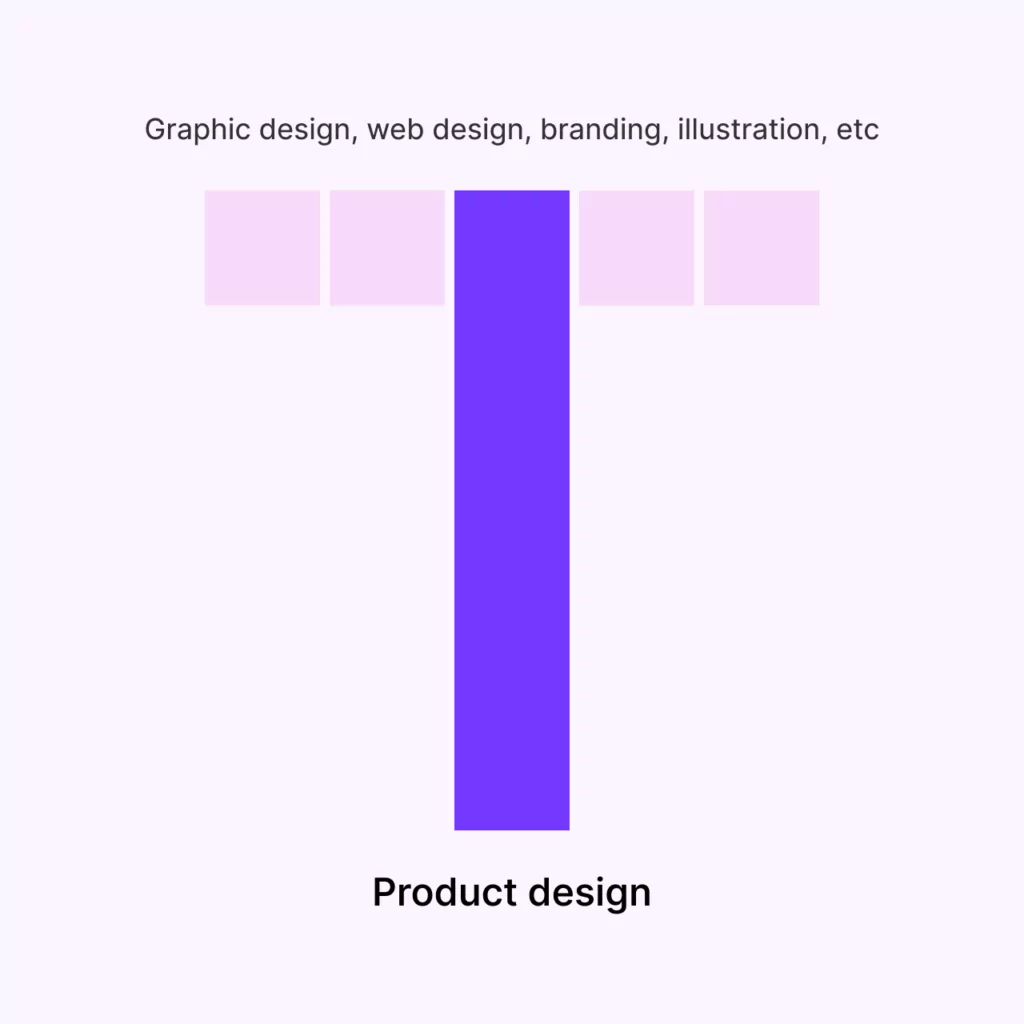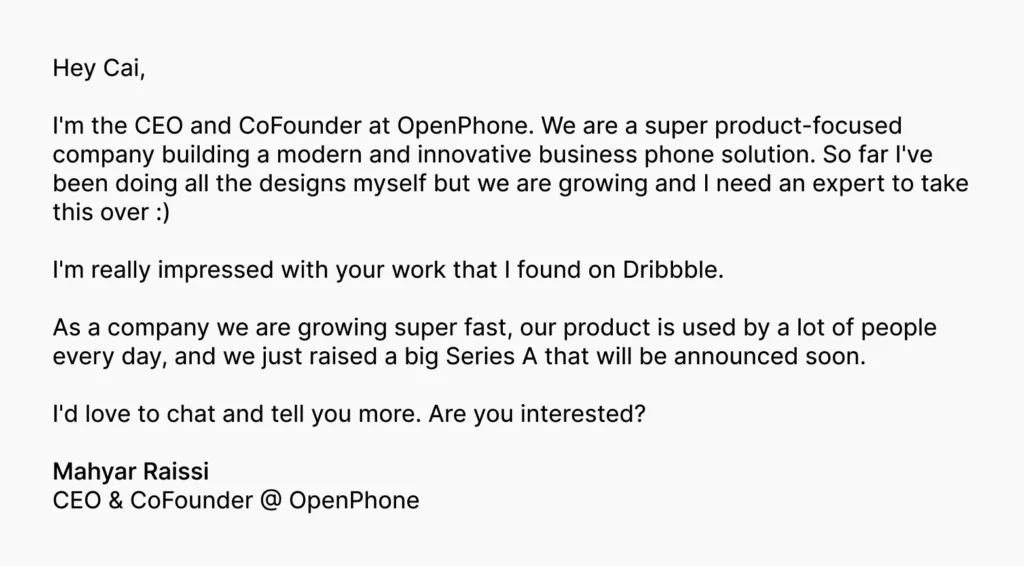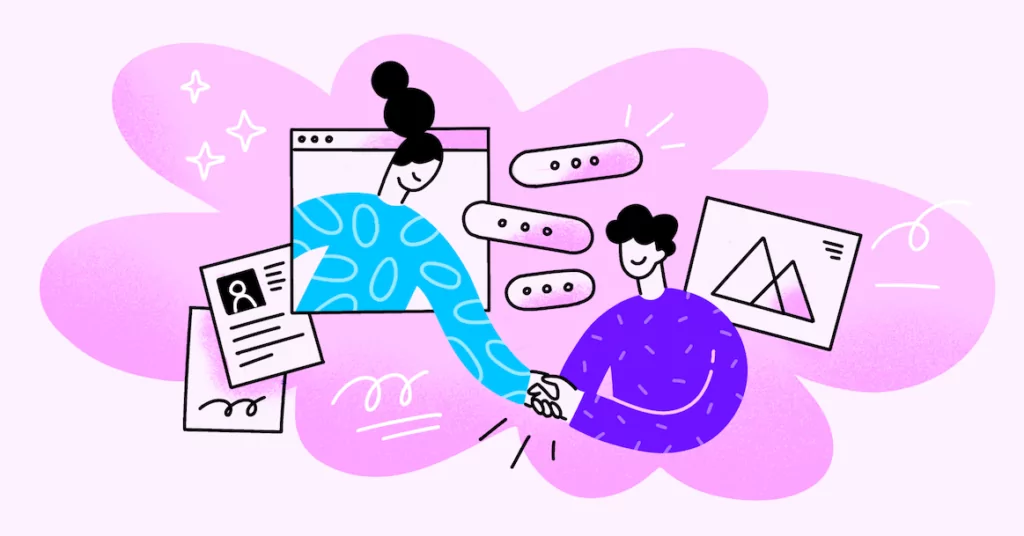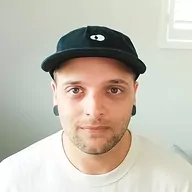As a first-time founder, hiring your first designer can be tricky. Even if you have some knowledge of design, the stakes are immeasurably higher when hiring your first (rather than your 10th). And if you have no design background, it can feel impossible to even know what you’re looking for, or where to begin,
Fortunately, there are a few things you can do to make that crucial first design hire a smoother experience. These are things I’ve learned both as that initial design hire — I joined OpenPhone as our first designer back in 2020 — and as someone who’s made three full-time design hires since then.
Here’s how you can increase your chance of successfully landing a designer who can kickstart and scale the design team for your company.
Firstly, how do you know it’s time to hire your first designer?
The answer, of course, really depends on your startup and its needs. If you’re building a product though, the answer is “as soon as possible.”
If you don’t have a design background, it’s important to remember that a designer doesn’t just make things “look pretty”. Far from it — design is a critical component of your brand’s entire user experience (UX). And especially if you’re building a user-centric product, a designer can help guide the process by asking the right questions, doing competitive research, and ensuring product functionality remains focused on the end-user.
Some founders can get away with bootstrapping their design by using user interface (UI) kits or working with a few freelancers. However, the longer you put off hiring a dedicated designer for your team, the higher the chances that you’ll wrack up a large design debt — where you’ll then need to go back and re-do original work to make your product, branding, and marketing cohesive and consistent.
It’s also important to consider the potential cost of getting design wrong early on, the famous quote being, “If you think good design is expensive, you should look at the cost of bad design.” If your UX isn’t strong, and that impacts the initial adoption of your product, that can sometimes make or break your startup before it even had the chance to really get going.
Your budget, as well as your founding team’s knowledge of design, will also play a part in determining when the right time to hire a dedicated designer should be. In the case of OpenPhone, our Co-Founder Mahyar Raissi had design experience. With the rest of the team being very strong collectively, they were able to get a lot out of a little, pushing out their first design hire for some time — until just before our Series A was announced in November 2020.
For those who have zero design experience, it’s best to think of hiring a dedicated designer as soon as you can afford to.
How to figure out what you need in your first design hire
If you’ve never worked closely with a design team before, hiring your first designer can seem overwhelming. After all, you don’t know what you don’t know 🤷♂️. However, there’s some prep work that you can do ahead of time to help you better understand what you, specifically, need out of your first design hire.
1. Prioritize your design needs
First off, you want to make sure you understand why you need a designer — “because my colleague said we should” isn’t a good enough reason.
If you’re an early-stage startup, you likely have multiple design needs, but at this stage, it’s important to focus on your most pressing design needs:
- Do you need someone who can take the lead on product design?
- Is branding a more urgent need at the moment?
- Or are you finding that marketing or social needs the most design help?
- Maybe all three?
Getting crystal clear on your objectives, the most critical to your business right now will help you understand where your prospective first designer will need the most experience. That can help you craft your job description and inform who you reach out to on design websites.
Below is a list of sites that I actively use when I want to source designers and browse portfolios:
- Dribble – Chance are you’ve already heard of Dribbble. And if you haven’t, definitely check it out! It’s one of the largest and highest-quality design communities in the world, with a focus on many disciplines including product design, visual design, illustration, and motion. You can sign up for free to start browsing portfolios, and they also have a paid designer search option.
- Behance – Another extremely popular design community, with a focus on graphic design, brand design, 3D, marketing, and illustration.
- DesignX – A small, tight-knit community of designers and leaders, with an excellent Slack channel and organized events. Highly recommended if you want to ask questions and learn more about design.
I also highly recommend checking out the following sites when you’re ready to post your design job post:
- Dribbble
- DesignX
- AngelList Talent
- We The Makers
- DesignRemotely
- We Work Remotely
- NoDesk
- JustRemote
2. Get your design bearings
If you have no prior design knowledge, it’s time to start learning. This doesn’t mean you have to become a designer yourself. It just means you should gain an appreciation for what it takes to build great products and fully understand the role of a designer.
Reading up on design-specific blog posts from companies you respect will help you understand how some of your favorite companies designed their features and brand, what constitutes “good design,” and some of the language used in the design world. You don’t need to be a pro, but having a basic understanding will ensure you’re not blindly hiring a designer.
Constantly browsing good examples of great design also helps (not just for hiring, but for your startup as well!). Aside from the examples above for where to source designers, three other sources of inspiration that I continuously go back to on a daily basis are:
- Nicely Done for desktop products
- Mobbin for mobile products
- Land Book for websites
3. Do an audit of competitors’ product design
If you have no prior design knowledge, this might sound scary — but this exercise in trying to really study and understand what makes a great product great, will in-turn help you identify what to look for when hiring your own designer.
Start by identifying competitors or other products in your space, since chances are they’ll have at least a somewhat similar audience and design aesthetic need to your own. You could even just choose products and brands that you admire. Then, use their products or websites and pay special attention to the user experience. Really try and study it, noting:
- How polished or premium the experience feels and why
- How immersed you felt in the product
- When you felt delighted as a user
- Times when the language used was crystal clear
- Times when a certain prompt or action left you feeling confused or frustrated
Collecting these concrete examples (both the good and the bad) will give you a much stronger sense of what to look for (and what not to look for) when reviewing prospective designers’ portfolios.
Then with this knowledge, when viewing a project in a portfolio — whether it’s a UI design as part of a product, a social or marketing graphic, or a website — consider how it would look if magically placed inside one of the brands established above (I personally like to use examples such as Notion, Linear, and Slack). Does it have the same type of polished, thoughtful, and beautiful design? Does it feel premium and considered? Or does it feel out of place, messy, cluttered, confusing, or low quality by comparison?
4. Mine your networks
As you prepare to search for your first design hire, talk to other founders in your network. Find out what attracted them to their first designer. What were they looking for? What made the designer they ultimately hired stand out from the crowd?
Talking to others who have recently gone through the process can really help you understand the nuances of hiring your first designer in a competitive job market, or for a company in a similar field or growth stage.
The traits to look for in your first design hire
Hiring the first member of any team in a startup is hard — but it can be even more so when you’re unfamiliar with the role. Overall, though, there are a few traits that you should look out for in your first design hire.
Hire a T-shaped designer

A T-shaped designer specializes in a specific design field — say, product design — yet still has a solid overall grasp of other design fields, such as branding and graphic design. You’ll want to hire a designer that has the most experience in whatever design need is most pressing for your company, but who will also be able to tackle any other design needs that should arise.
When Mahyar and Daryna hired me, I was primarily a product designer — that had been my focus for most of my career. But I also had experience in many other facets of design. In a startup — especially an early-stage startup — that type of flexibility is crucial because any first hire of a department will need to wear multiple hats. They may be designing the product one day, designing pages of the website the next day, and then creating graphics for social media the next.
Go as broad as possible without hiring a Master of None.
Look for some management experience
Hiring the first member of any team is difficult since that person needs to be both an adept individual contributor today and a strong team leader tomorrow. In my view, there are two ways you could go about hiring for these traits.
Your first option is to hire someone who is already a Head of Design (or similar) and already managing a team of designers, but who’s now hungry to join an early-stage startup and make their mark at the beginning of the journey. If you know that you’ll be likely hiring, say, 10 people under your lead designer within the next 12 months, you probably need someone with that level of experience upfront. The caveat here though is that they’ll need to be okay with probably earning less than they were before (startups need to be lean after all, especially in this climate), doing more on-the-ground work, and not having a team beneath them immediately.
Your second option, if you’re growing a bit slower, is to find someone who hasn’t run a whole design department before, but has some management experience. If they’re in a senior or higher position, they’ve probably been both a great individual contributor and also gained some foundational management experience. Most of the time, you won’t be hiring tons of people under this person right away anyway, so they’ll have time to grow into that leadership position.
At OpenPhone, Mahyar and Daryna went for the second option. I had managed people before, but I’d never led an entire department.
I joined OpenPhone as the Lead (only) Product Designer initially, and took on all design tasks from day one, slowly growing out a team about 11 months after starting.
Flexibility is key
While many people may think they want to work at an early-stage startup, not everyone is actually cut out for it. While it can be exciting, challenging, and extremely rewarding, it’s also stressful, busy, and very fast-paced. Priorities change frequently, and you have to be able to pivot and make decisions at a moment’s notice. And if you’re building a remote team, the challenges and hurdles can get even higher.
A designer might be the perfect fit in terms of skills and experience, but they need to want to work in an early-stage startup environment (with all of its upsides and downsides). If someone seems slow in their decision-making, more risk-averse, or not well suited to fast-paced environments, then they may not be the best fit for your startup right now.
How to land the perfect designer
Once you’re clear what soft and hard skills you need from design candidates, you can start interviewing candidates. Here are key things I would recommend during the interview process.
Cut the fluff
When Mahyar first reached out to me about joining OpenPhone, his email was incredibly straightforward. And after speaking with 50+ companies over the 9-month period I was job hunting for, it was a breath of fresh air.
He didn’t take the approach that most other founders or recruiters did, where they dressed up the company as a spaceship heading straight to the moon, making everything sound perfect, and pressuring me for an answer. Instead, he kept it really simple:

Mahyar’s laid-back energy and transparency continued throughout the entire interview process. When chatting with Daryna and Mahyar, they were both honest about the challenges and opportunities they were facing, OpenPhone’s current growth stage, and what lay ahead. I joined OpenPhone knowing exactly what I was getting myself into, and being really excited for exactly that opportunity.
An added benefit of that type of transparency is that you don’t end up attracting the wrong candidates. That saves both the candidate and you time since you won’t have new employees leaving when the glimmer fades in three months.
Focus on the opportunity
As an early-stage startup, you’re probably not going to be able to match the salary, benefits, or resources that a larger, more established company can offer. For the right designer, though, that shouldn’t matter — since they should be interested in the opportunity.
When you’re interviewing designers, focus on the opportunity that lies ahead for both your startup and the design team specifically. Painting a picture of your ambitious goals — including those your teams have already met — gives the designer a clearer idea of your mission and your story. It also allows the interview to be a conversation (rather than an interrogation), where candidates have a natural opportunity to explain how they might use design to support, hit, and expand your goals.
Introduce them to the team
My third interview with OpenPhone took place with a panel of around six other employees. It was an informal conversation — similar to my chats with Mahyar and Daryna — but it gave them the chance to assess my culture fit, and it gave me the opportunity to meet other key members of the team.
As a prospective employee, meeting the team showed me that I’d be joining a cohesive group of kind, passionate, and incredibly smart people. For someone who’s looking to join an early-stage company, knowing that the existing team works together well is incredibly important. It gives them the sense that you’re all aligned and working together towards the same goals.
Once you and the candidate have a better understanding of whether they’d work well with your team, you can share any take-home assignment as part of your hiring plan.
Build trust during the interview
Your first design hire will play a critical part in helping shape your product, branding, and marketing as a company — but only if you’re willing to hand over the keys 🔑
Many founders struggle to hand over responsibility, and understandably so: your startup is your baby, your life, and you’ve put your blood, sweat, and tears into it. But to do their job properly, designers need to have their team’s trust and support. So make sure you’re gathering all of the information you need during the interview stage to ensure that you can comfortably hand over responsibility on your designer’s first day.
Hopefully, if you’ve followed the steps above, you’ll be well on your way to being able to do that.
Find the perfect fit for your team
Adding the first five, ten, or fifteen employees to your early-stage team can feel impossible, especially when you’re hiring for a field you know little about. Fortunately, once you’ve added a strong design lead to your startup, they can grow their own team from there on out.
If you have any questions about hiring your first design lead, leave a comment below. I’m happy to share more about my journey or how I’ve grown the design team since joining OpenPhone.
PS: We are hiring for a Product Designer. If you know anyone who would be a great fit, please share.

